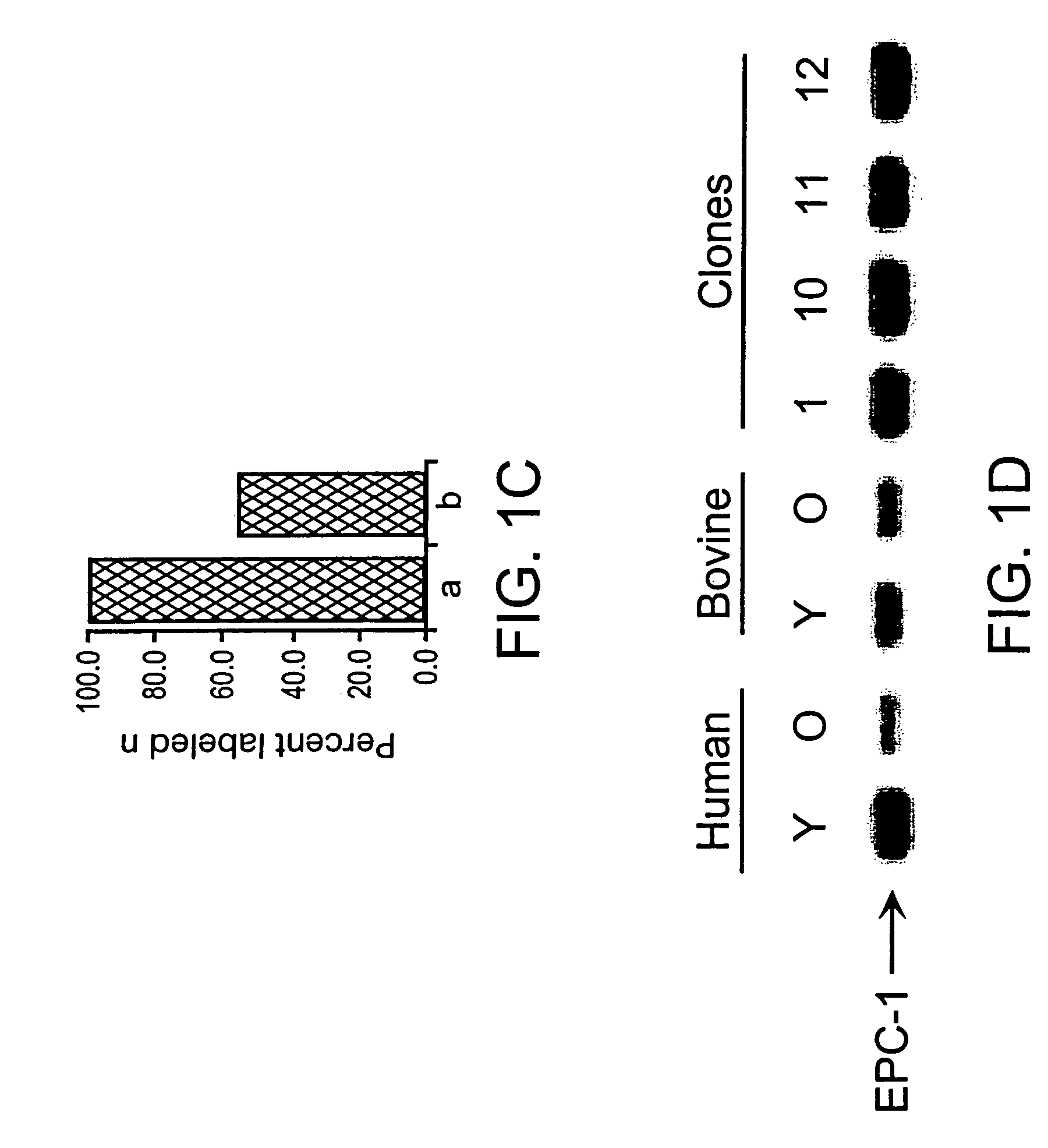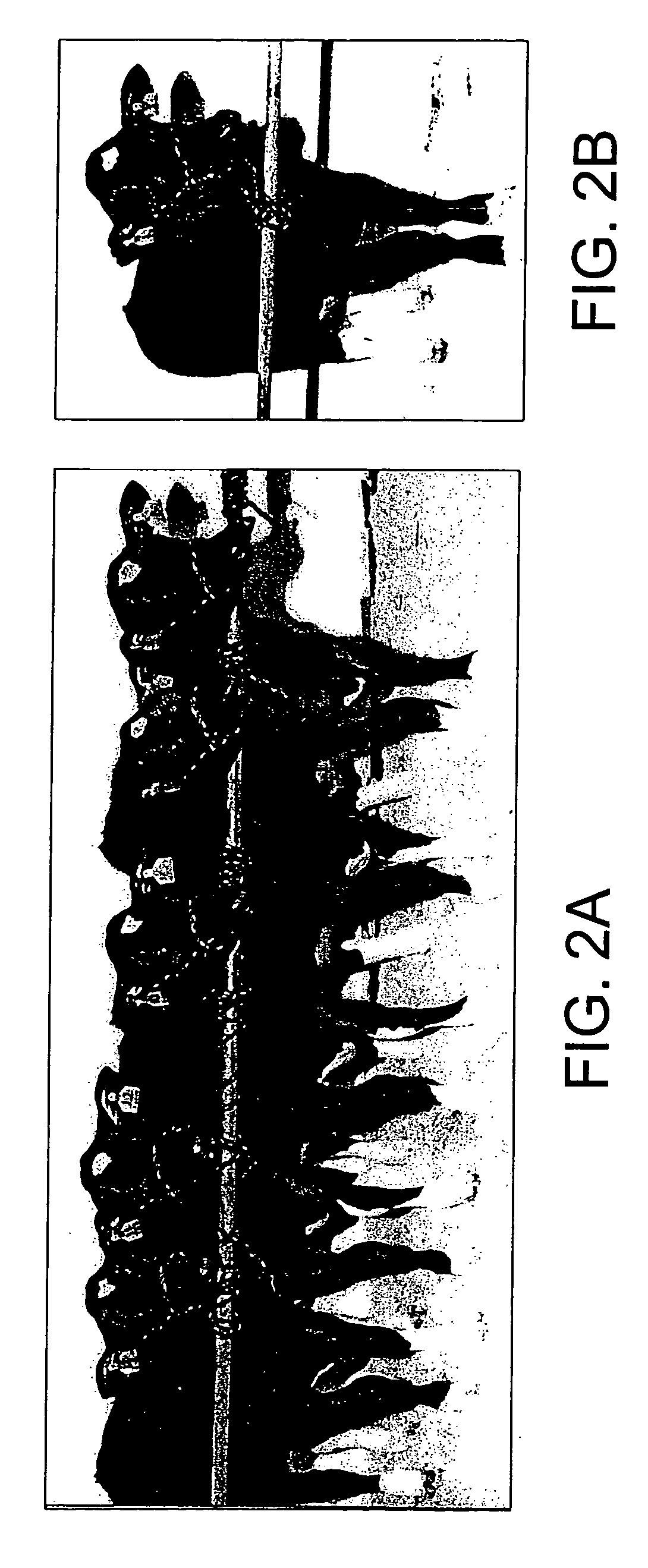Methods of repairing tandemly repeated DNA sequences and extending cell life-span nuclear transfer
a nuclear transfer and dna sequence technology, applied in the field of repairing tandemly repeated dna sequences and extending cell lifespan nuclear transfer, can solve the problems of not showing evidence of cells, better results, and non-obvious longer telomeres, so as to increase cell life span or cell proliferation capacity, restore youthful gene expression patterns, and increase epc-1 activity
- Summary
- Abstract
- Description
- Claims
- Application Information
AI Technical Summary
Benefits of technology
Problems solved by technology
Method used
Image
Examples
example 1
Fetal Donor Cells
[0091] This preliminary experiment suggested that somatic cell nuclear transfer can be used to restore the life-span of primary cultured cells. When fibroblasts from a six week-old fetus were cultured to senescence, they underwent approximately thirty population doublings, with an average cell cycle length of 28 to 30 hours. To test whether these cells could be rescued from senescence by nuclear transfer, a 40-day old fetus was generated using cells within 0.8 populations doublings from senescence. Fibroblasts derived from this fetus underwent 31 population doublings, as compared to 33 doublings for fibroblasts from a same-age fetus conceived normally. This data suggested that nuclear transfer is capable of rejuvenating senescent cells.
example 2
Cloned Calves Derived from Senescent Donor Somatic Cells
[0092] A somatic cell strain was derived from a 45-day-old female bovine fetus (BFF) and transfected with a PGK driven selection cassette. Cells were selected with G418 for 10 days, and five neomycin resistant colonies were isolated and analyzed for stable transfection by Southern blotting using a full length cDNA probe. One cell strain (CL53) was identified as 63% [total nuclei] positive for the transgene by FISH analysis, and was chosen for the nuclear transfer studies described in this study.
[0093] The CL53 fibroblast cells, which were characterized as negative for cytokeratin and positive for vimentin, were passaged until greater than 95% of their life-span was completed. The morphology of the cells was consistent with cells close to the end of their life-span as indicated by the phase contrast pictures of the cells by light microscopy (FIG. 1A). A more detailed ultrastructural analysis by electron microscopy demonstrated...
example 3
Nuclear Transfer Using Adult Donor Cells
[0104] The above data obtained with fetal fibroblast donors are consistent with experiments performed using senescent cells obtained from adult animals. Dermal fibroblasts were grown from three Holstein steers. Single cell clones were isolated and population doublings counted until senescence. Nuclear transfer was performed using these fibroblast cells that were at or near senescence. Fetuses were removed from the uterus at week 6 of gestation and fibroblasts isolated from them and cultured until senescence. Cells were analyzed by imunohistochemistry and were shown to be fibroblasts. The number of population doublings in the original cells from the adult animals at the time of nuclear transfer (counted as number of PDs before senescence) and from 6-week-old fetuses generated from them are shown in Table 1. Cell strains isolated from the cloned fetuses underwent an average of 89.4±0.9 PDs as compared to 60.5±1.7 PDs for cell strains generated ...
PUM
| Property | Measurement | Unit |
|---|---|---|
| Fraction | aaaaa | aaaaa |
| Fraction | aaaaa | aaaaa |
| Fraction | aaaaa | aaaaa |
Abstract
Description
Claims
Application Information
 Login to View More
Login to View More - R&D
- Intellectual Property
- Life Sciences
- Materials
- Tech Scout
- Unparalleled Data Quality
- Higher Quality Content
- 60% Fewer Hallucinations
Browse by: Latest US Patents, China's latest patents, Technical Efficacy Thesaurus, Application Domain, Technology Topic, Popular Technical Reports.
© 2025 PatSnap. All rights reserved.Legal|Privacy policy|Modern Slavery Act Transparency Statement|Sitemap|About US| Contact US: help@patsnap.com



